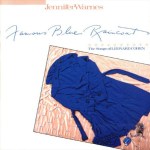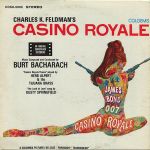 More of the Music of Jennifer Warnes
More of the Music of Jennifer Warnes
More of the Music of Leonard Cohen
I’m a huge fan of this FBR. It’s the only album Jennifer Warnes ever made that I would consider a Must Own recording or a desert island disc. Without question this is her masterpiece.
Key Test for Side One
Listen to the snare drum on Bird on a Wire. On most copies it sound thin and bright, not very much like a real snare. Let’s face it: most copies of this record are thin and bright, and that’s just not our sound here at Better Records. If the snare on Bird sounds solid and meaty, at the very least you have a copy that is probably not too bright, and on this album that puts it well ahead of the pack.
While you’re listening for the sound of that snare, notice the amazing drum work of Vinnie Colaiuta, session drummer extraordinaire. The guy’s work on this track — especially with the high hat — is genius.
Key Test for Side Two
Listen to the sound of the piano on Song of Bernadette. If it’s rich and full-bodied with the weight of a real piano, you might just have yourself a winner. At the very least you won’t have to suffer through the anemically thin sound of the average copy.
Track Commentary
Side One
First We Take Manhattan
Don’t expect this song to be tonally correct. It runs the gamut from bright to too bright to excrutiatingly bright. Steve Hoffman told me that he took out something like 6 DB at 6K when he mastered it for a compilation he made, and I’m guessing that that’s the minimum that would need to come out. It’s made to be a hit single, and like so many hit single wannabes, it’s mixed brighter than we audiophiles might like.
Bird on a Wire
Those big drum thwacks make this song work — if you don’t have a big system, forget about ever hearing this song do what it’s supposed to.
Famous Blue Raincoat
The saxophone should sound realistic on a properly mastered version of this record: full-bodied, yet lively.
Joan of Arc
This is a good test for transparency — the clarity of the little bells and the amount of ambience surrounding the guitar are a good indication of how resolving your system is. Of course, brighter and thinner pressings will emphasize the clarity of these instruments, so it’s easy to be fooled by this sort of thing as well.
When the voices come in, they should sound tonally correct. Whatever changes you make in your stereo to hear those opening bells more clearly, just make sure that the voices still sound right when you are done.
One of the best songs on the album. It builds to a truly powerful climax.
Side Two
Ain’t No Cure for Love
This song tends to be bright and somewhat spitty.
Coming Back to You
This one too.
Song of Bernadette
One of the most emotionally powerful songs on the record.
A Singer Must Die
The multi-tracked chorus of voices should be amazing sounding if you have a good copy and a big room to play your stereo. I once heard this at a stereo store where the room was about 30 feet square with a 20 foot (!) ceiling, the speakers well out into the middle of the room. Even though the tonality was a bit wrong, each of a half or dozen or more singers clearly was occupying his or her own space. I remember it to this day; it was breathtaking.
But like most audiophile systems, it got some things right and some things ridiculously wrong. Jennifer — the person whose name is on the album — didn’t sound right. She sounded like she had a blanket over head. The owner of the audio store did not seem to be bothered by that fact, or to notice it all for that matter.
Came So Far for Beauty
Another one of the best tracks. The last three songs on this side are as good as it gets for the music of Jennifer Warnes.
Further Reading
(more…)
 More of the Music of Jimmy Smith
More of the Music of Jimmy Smith More of the Music of Burt Bacharach
More of the Music of Burt Bacharach More of the Music of Jennifer Warnes
More of the Music of Jennifer Warnes
